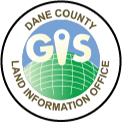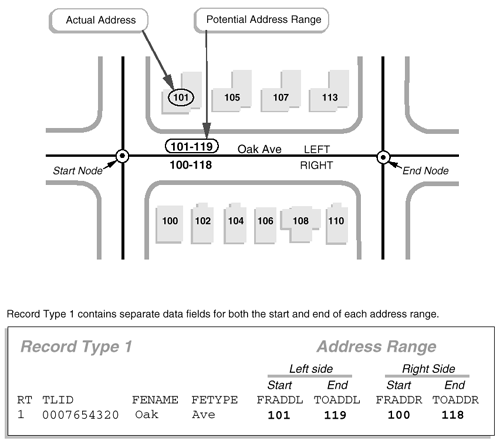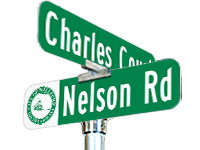
The naming of streets and the addressing of structures is not generally given much thought by the residents of a city, village, town or county. However, the lack of attention to these tasks can create unintended confusion. The consideration of the adoption of street names and the assigning of addresses, provides a level of order to a community and making is easier to locate places and facilities.
The following are a list of guidelines or best practices that should be considering in the naming of streets and addressing of structures. This document is not intended to be a comprehensive or strict set of rules, but rather to set of considerations when naming streets or assigning addresses. It is hope that this will assist municipal partners in their role as street naming and addressing authority.

An address is key element to describe the specific location of a building, an apartment, or a plot of land. The most commonly used way to locate a specific property is the assigned house or premise address. House or premise addresses are used daily by private citizens, postal service, delivery services, utility companies and public safety to locate specific places. Street names provide a linear reference and the assigned address number creates a unique identifier for each building. Uniformity is a basic requirement to assure that any given property can be quickly and easily located.
Since County residents rely on a central 911 dispatch center for public safety services, address assignment methodologies must be uniform throughout the County, regardless of the addressing authority. The safety and welfare of residents in Dane County depends on the ability of emergency services to quickly locate every property. Addressing must be given a high priority during the development review process to assure consistency. A good address system should be easy to implement, easy to use, and predictable. The most common method for counties and municipalities meet these objectives is through the use of the addressing grid. This system defines ranges of numbers in a grid pattern, allowing flexibility for future development while maintaining the order of existing and approved developments. A good address grid system requires minimal change with respect to addresses that are already in place. The transition from one grid system to another can create potential addressing conflict, so care must be taken to understand the relation so a given addressing grid in respect to one neighbors addressing grid.
Address Numbering Guidelines
General
Single Address Structure
Multi Address Structures
References
Dane County Road Naming Criteria
City of Madison Street Naming Guidlines
City of Fitchburg Addressing Guidlines

Street names are used daily by private citizens, postal service, delivery services, utility companies and public safety as a linear reference to locate specific places. The street naming process is generally done through the platting or subdivision process, with suggested street names proposed by a developer. After a review process that includes the county, the final acceptance of a street name is done through a resolution by the Street Naming Authority (city, village or town) that the development is within. Street name changes may also be undertaken by the Street Naming Authority. When approving a street name, care should be taken to understand the base name of the street name is compared to the pre and post modifiers. The United States Postal Service mandates a list of approved street name post-types that should be followed.
Street Naming Guidlines
Special characters such as apostrophes, hyphens, decimals, or periods should be avoided. This characters create problems for databases and signage used for 911 and mailing, and are strongly discouraged.
A municipality is required by state statute to formally adopt a new street name or change a street name by resolution. The resolution should recorded with the County Register of Deeds.
If the street is not a through street, but is broken by intervening land uses and is laid out in substantially the same location at a more distant point, the same name should be used on all of the "links."
Communities have a meridian/base line that divides the community into east/west, north/south sectors and the starting point for an addressing grid. It is not required that the prefixes "East," "West," "North," and "South" be used if a continuous numbering system is used.
Avoid corporation names or a business name.
The name of a living individual should not be used.
If useful, consider use naming themes in subdivisions or even larger geographic areas such as quadrants. Choosing names related to a single theme, such as birds, flowers, planets, etc., could be considered as a means of general identification for streets in a subdivision.
To make it easier to map street names, consider short street names for short road lengths.
Only street name post-types designated by the United States Postal Service Addressing Standard should be used. https://pe.usps.com/text/pub28/28apc_002.htm